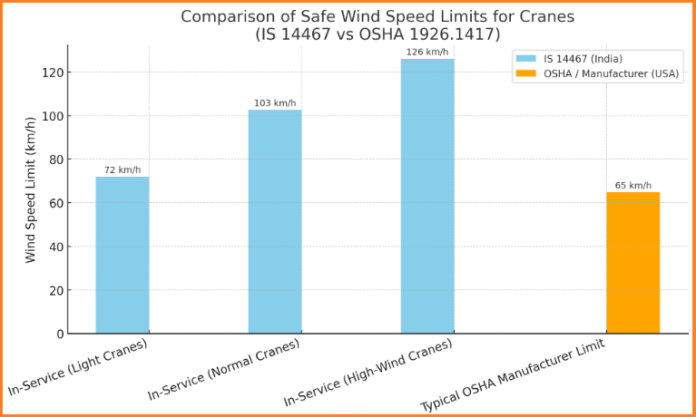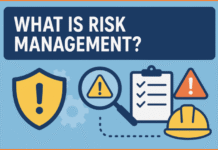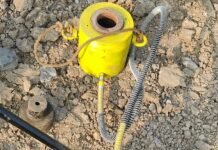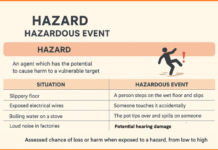Cranes are critical lifting equipment in construction, ports, and heavy industries. However, one of the most underestimated hazards during crane operation is wind. Excessive wind pressure can destabilize cranes, cause overturning, or lead to dropped loads. To mitigate these risks, standards such as IS 14467:1997 (Cranes – Wind Load Assessment) in India and OSHA 29 CFR 1926.1417 in the United States provide clear guidelines for safe crane operations under windy conditions.
Contents
1. Wind Load Assessment as per IS 14467:1997
IS 14467, which is harmonized with ISO 4302:1981, establishes the methodology for calculating wind effects on cranes. The standard considers two main design wind conditions:
a) In-Service Wind (During Operations)
This is the maximum wind speed under which the crane can safely operate.
- Formula for dynamic wind pressure (p): p=0.613×V2(kN/m², with V in m/s)p = 0.613 \times V^2 \quad \text{(kN/m², with V in m/s)}
- Design Limits (Table 1 of IS 14467):
- Type A (light cranes, booms easily lowered): 20 m/s (~72 km/h)
- Type B (normal outdoor cranes): 28.5 m/s (~103 km/h)
- Type C (transporter/unloaders for high winds): higher design thresholds
Wind action on suspended loads must also be considered. IS 14467 prescribes additional wind forces proportional to the mass of the hook load, ensuring both crane and load stability are assessed.
b) Out-of-Service Wind (When Not in Use)
This refers to storm wind speeds the crane must withstand when parked or out of service.
- Cranes must be designed to resist winds from the most unfavorable direction.
- For mobile cranes with jibs <30 m that can be lowered, only the lowered condition needs design checks.
- The manufacturer’s manual must specify the safe wind speed the crane can withstand when parked, along with securing or stabilizing requirements.
2. OSHA 29 CFR 1926.1417 (U.S. Standard for Crane Operations)
The U.S. Occupational Safety and Health Administration (OSHA) provides enforceable requirements for crane safety. Key provisions from 29 CFR 1926.1417 – Operation include:
- Ceasing Operations in High Winds:
- Crane operations must stop when wind, storms, or other weather conditions could affect safety.
- Employers must follow the crane manufacturer’s instructions regarding maximum wind speeds.
- Load Handling under Wind Influence:
- Operators must account for wind on suspended loads, especially loads with large surface areas that act like sails.
- Securing the Crane (Out-of-Service Condition):
- Cranes must be secured against high winds when not in use, following the manufacturer’s recommendations.
In practice, this means U.S. sites rely on manufacturer-rated wind limits (commonly 15–20 m/s (54–72 km/h) for tower cranes in service).
3. Wind Speed Limits and Safe Practices (Comparison: IS vs OSHA)
| Condition | IS 14467:1997 (India) | OSHA 29 CFR 1926.1417 (USA) |
|---|---|---|
| In-service wind limit | Type A: 20 m/s; Type B: 28.5 m/s; Type C: higher | Manufacturer-rated (typically 15–20 m/s for tower cranes) |
| Out-of-service condition | Must withstand storm winds; jib lowered or secured | Must be secured as per manufacturer; no fixed number in regulation |
| Wind effect on load | Explicit formulas for hook load force (0.015–0.06 mg kN depending on crane type) | Must consider wind area/shape; manufacturer instructions |
| Stopping operations | When wind exceeds design in-service limit | When wind/weather could affect safety |
4. Practical Safety Guidelines for Crane Operations in Wind
- Pre-Operation Planning
- Check weather forecasts daily.
- Establish a wind monitoring system on-site.
- During Operation
- Stop operations if wind exceeds safe limits.
- Reduce load radius and capacity as wind speed increases.
- Avoid lifting loads with large surface areas in strong winds.
- When Out of Service
- Lower and secure jibs/booms if possible.
- Engage rail clamps, storm brakes, or tie-downs for tower cranes.
- Follow manufacturer’s out-of-service procedures strictly.
Safe crane operation under wind conditions is a critical aspect of site safety management.
- IS 14467:1997 provides structured wind load calculations and sets in-service wind speed limits (20–28.5 m/s).
- OSHA 29 CFR 1926.1417 emphasizes compliance with manufacturer instructions and mandates stopping work in unsafe wind conditions.
By integrating both standards, construction managers can develop Effective safety procedures, preventing accidents and ensuring compliance with international best practices.





